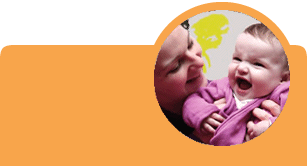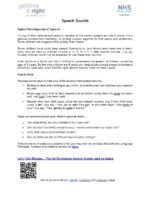
Young children take several years to develop use of all the correct speech sounds in words. It is a gradual process from babbling to putting sounds together to form words and sentences. Some sounds develop earlier than others. For example, children tend to use sounds such as ‘p’, ‘b’, ‘m’ first and learn to use other sounds such as ‘l’, ‘r’ much later.
Children learn about speech sounds by listening to you and by watching how your tongue and lips move as you speak.
Remember
✓ A 3 year old’s speech can usually be understood by their main carer, usually a parent
✓ A 4 year old’s speech can usually be understood by their family and nursery staff
✓ A 5 year old’s speech can usually be understood by everyone
Here’s how to help
➢ Take time to talk, a little and often.
Make sure your child can see your face when you talk to him/her
➢ Encourage your child to feel relaxed and confident; praise them for what has been said, not how it has been said
e.g. if the child says: ‘Look, a tat!’, you say: ‘Yes, you’re right it’s a cat.’
Demonstrate the right way to say words that your child finds tricky without asking them to copy you
➢ Don’t pretend to understand. If your child is not clear, try saying ‘show me’ or encouraging gestures alongside the word
More ways to help
➢ Share books together
Wait for your child to join in with the repetitive line or rhyming word
➢ Sing, or say, nursery rhymes slowly together
Learn a new one each week and add in actions to make it fun
➢ Show your child how longer words can be broken down into smaller bits (syllables)
At story time – talk about the characters in the books: Spi-der-man; Gru-ffa-lo
At mealtimes – talk about what you are eating or drinking: bro-cco-li; bread-stick
At bath time – talk about the toys: cro-co-dile; oc-to-pus
Further help and information
You can watch a recording of our ‘How to Help Your Child’s Speech’ webinar below.
Try using these tips and ideas for approximately 2-3 months. If you would like some more advice after this, please contact your local Helpline HERE.





